Shrub berries grow small. Selection of shrubs with different flowering periods
Among garden plants, shrubs that form spectacular ornamental berries can rightfully be called the most patient: in order to reveal their beauty, these plants wait for the coldest season to come. Then, against the backdrop of the snowy beauty and majesty of winter landscapes, they seem to be strewn with luxurious beads and stones as royal plants. The most spectacular of the ornamental berry bushes are those that flaunt the luxury of a coral necklace on the shoots.
In winter, when there is a catastrophic lack of colors in the garden, and evergreen crowns and bare graphic branches rule the ball, nostalgia for flowering and a rich palette of garden colors invariably emphasizes the gray despondency of frosty days. And only shrubs with decorative fruits enliven this gloomy and harsh picture. Like luxurious jewels, they brightly highlight front gardens, flower beds, terraces, emphasize the graphic restraint of bare crowns and remind that nature never has calm periods.
With red fruits, they are deservedly considered the main berry winter plants. After all, it is the bright fiery color and the energetic palette of scarlet that glow and shimmer so favorably against the background of gray-brown tones of gloomy winter landscapes. Contrasting with the dazzling whiteness of snowdrifts, sparkling in luxurious frost crystals, coral berry necklaces seem mysteriously shimmering from the inside. There are also plants among such crops that combine bright beads of berries with variegated evergreen foliage, which even more reveals the beauty of luminous fruits. Such plants are excellent candidates for the role of soloists, able to revive even the most gloomy garden in the winter.
The absolute favorite of "winter" gardening is considered. This is a spectacular ground cover that creates luxurious high carpets and does not lose the bright color of its greenery throughout the year. But the main pride of the evergreen cotoneaster of this species is the winter coral necklace of the brightest fruits, which abundantly dot all the shoots, creating the feeling that someone just scattered large beads over it. Dummer's cotoneaster is also perfect for the role of an ampelous ground cover shrub: it effectively hangs shoots from stone florists, alpine hills, and supporting walls. Of the higher types of cotoneaster, only cotoneaster Franche, reaching a height of two meters, can boast of high decorative fruits. He has elegant arched drooping shoots decorated with berries until spring.
One of the unique shrubs, the beauty of berry beads of which is emphasized by no less spectacular winter-green foliage, is holly, which has varieties with a variety of variations of green and variegated color. Decorated with a wavy edge with sharp peaks, more or less pronounced in different varieties, the leaves combine the effect of a dense and glossy surface with the most beautiful nuances of green color, which only emphasize light spots and borders. And how the seedlings of small, but very bright coral berries glow against their background! In addition to a luxurious palette of red, holly berries can offer unusual blue, yellow, white, orange colors. The absolute favorites of garden design are the holly holly, which has a representative varietal palette of pure green cultivars, and the Altaklarensky holly, which offers the best variegated varieties.
Of the tall shrubs, pyracantha is distinguished by the most luxurious large fruits that attract songbirds. Among the various varieties of this shrub, which reaches an average height of three meters, you can find plants with scarlet, yellow and orange berries, although scarlet varieties that look like corals are the most spectacular in the winter garden. This thorny evergreen shrub with a bright autumn crown show and openwork, dense branching texture is most often used in regular gardens where topiary is appropriate.
The landscape outlines of elegant garden silhouettes never go out of fashion, which captivate with a combination of elegance of the crown structure and the bright radiance of luxurious brushes, as if translucent berries, shining in the garden like precious stones. Among the increasingly popular decorative combs of viburnum, almost all flaunt with luxurious red clusters of berries, but among them there are chokeberry varieties and plants, the color of berry beads on which changes: for example, in wrinkled viburnum, red fruits gradually turn black.
Bright shiny scarlet beads on the branches, also attributed to evergreen shrubs with high winter hardiness, sparkle especially effectively in the rays of the winter sun. This is an ideal shrub for planting in flower beds, with glossy, luxurious, tight-fitting, rounded, dense leaves, the berry beads of which are collected in apical seedlings.
If in other shrubs the red necklace of berries gradually decreases and disappears from the garden scene thanks to the birds actively feasting on the fruits, the huge, pointed and recumbent berries, similar to ceramic beads, do not attract them. Due to the inedibility of its berries, this charming shrub with an openwork crown decorates the garden all winter with a luxurious scattering of red pearls. In height, wintergreen usually does not exceed one and a half meters and is distinguished by a bright bluish color of elongated large leaves.
The wintergreen company can be made up of berries that are more modest in size, but also varieties of evergreen common lingonberries that do not attract birds. This squat shrub, most often growing in the company of heathers, forms a charming thicket of creeping shoots with almost rounded bright leaves that persist in winter, between which bright clusters of red shining berries shyly peep out.
The scarlet fruits of the most unusual shape are the pride of the euonymus. They look like artificial pendants and are very poisonous, but do not last long in the garden thanks to the adoring birds. True, in order for the original four-winged hanging seedlings to become a decoration of the garden, it will be necessary to allocate space for tall and massive species of this plant.
Both the wrinkled rose and the wild rose will bring their notes of a scarlet scattering of luxurious berries into the garden: part of the numerous harvest of their fruits, even during the winter, will still remain on the bushes even after the complete loss of leaves. These plants are the most landscape and natural representatives of the huge family of the garden princess.
The use of berry bushes with an eye on decorativeness in winter is a simple matter. After carefully examining the garden, mark all those plants that will look attractive even after the end of the autumn parade: in places that are the most "empty" in the winter garden, such shrubs should be prudently planted. Despite the fact that horticultural crops covered with a scattering of red pearls look advantageous against almost any background, their beauty is most fully revealed in combination with winter-green crops: in the company of bright berries, juiciness and intensity, the freshness of the green color of the wings and individual plants is revealed magnificently.
Shrubs with a scattering of luxurious berries can be used not only in open field, but also in pot and container compositions that will decorate, and even balconies. For pot compositions, it is desirable to use low-growing and winter-green berry bushes, such as wintergreen, holly, etc., with appropriate warming wrapping of the containers in which they are planted.
How long it will be possible to admire the overexposure of coral beads in your garden depends not only on the activity of birds, but also on climatic features. If the weather is consistently frosty in winter, the berries will stay on the bushes for several months. If periods of thaws and severe frosts arrange weather "swings", the fruits will quickly lose their color and fall off.
It is the berries that make the shrub truly versatile - all four seasons it will play its role in decorating the garden. Therefore, more and more often in the areas you can meet ornamental shrub with black berries, as well as with red or white ones. In autumn and winter, such a bush simply will not be equal on your site!
1 Ornamental berry bushes in landscape design
Berry bushes - special element in landscape design. Indeed, in addition to the forms of the shrub, the color of its leaves and flowers, its size, planting and caring for it, the gardener or designer must take into account how it will look in the fall when its berries ripen. And they come in a variety of colors - yellow, red, black, white, and from this composition in your garden can both win and lose. For example, red viburnum will fit perfectly against the background brick wall, shading its texture with clusters of juicy red berries, while a snowberry with white berries will look quite ordinary.
The same viburnum red will look good in splendid isolation - a tapeworm. However, a group of three bushes of different sizes is the most win-win option! It is best to place them in a triangle, giving the background to the tallest bush, and the front to two smaller bushes, it is desirable that they also be of different sizes. You can enhance such a composition or decorate with large stones. It will look great both just on the lawn, and not far from the reservoir or next to the lantern. In addition, this composition can cover an unsightly wall.
Choosing a place for a composition is an individual matter. However, when choosing a site for planting shrubs, you must clearly assess the conditions in which they will find themselves. If this is a shaded area, it makes absolutely no sense to plant shrubs with brightly colored foliage in this place (for example, a barberry variety golden torch, the leaves of which have a bright yellow color), otherwise in the shade they will lose their characteristic color. For the rest, consider the features and preferences of a particular ornamental berry bush, soil composition, climate and temperature.
As experience shows, it is most reliable to plant shrubs with a closed root system, that is, in containers. You will be sure that their roots are not dried out, not damaged during transportation, and in general the plant will transfer planting to a new place much better. However, even they will take root better if they are planted during the dormant period.
At the chosen place, accurately outline the location and shape of the holes, given that they should be twice the size of the root ball. A mixture of peat, humus and crushed earth should be added to the bottom of the hole; in case of heavy soils, it does not interfere with adding sand to the hole. Then fill the hole with water and let it soak in.
After you remove the bushes from the containers, you will have enough time to evaluate the composition and correct the arrangement of the seedlings. If you like everything, pour the earth mixture into the holes and gently compact the soil, creating a small depression around the perimeter of the pit so that water for irrigation does not spread. Then water the planted bushes and sprinkle the soil around the trunk with mulch.
3 Cotoneaster chokeberry: an ornamental shrub with black berries
Frost-resistant and undemanding to moisture, easily tolerating urban conditions - chokeberry belongs to the group of shrubs that will not give the gardener much trouble. This ornamental shrub with black berries is easy to transplant, used by gardeners in both single and group plantings, as well as in hedges. The decorative form differs from the wild one in more elegant drooping inflorescences and large leaves, but in addition to its decorative purpose, the cotoneaster serves as a good honey plant, and its dense wood is a good material for pipes, canes and other crafts.
Cotoneaster berries are edible, although they do not differ in excellent taste. They can be used to color tinctures and soft drinks, add berry powder when baking gingerbread. However, much more often cotoneaster berries and its young shoots are used in folk medicine, recommending the use of fresh and dried berries when inflammatory processes and diseases of the stomach.
4 Ornamental shrubs with red berries in your area
Kalina red - this bush will never be commonplace, no matter what competitors from abroad are imported into our country. A landscape with bunches of juicy red viburnum berries crushed by snow is an excellent decor for the landscape in the winter. In the spring, viburnum blooms with white bunches against a background of bright green foliage. Leaves turn red and brown in autumn.
Viburnum shade-tolerant, but it is best to plant it in open sunny places. Prefers rich, well-drained soils. In the conditions of the city, viburnum feels great. It is used both as a tapeworm and in group plantings. These ornamental shrubs with red edible berries look very harmonious in plantings with oak, linden and mountain ash. In the world, varieties of viburnum with yellow and black berries are beginning to gain popularity.
Tolerant of urban conditions and barberries. Drought-resistant, unpretentious to the soil, they do not tolerate only stagnant water. Numerous varieties are distinguished by decorative coloring of the leaves - from bright yellow to purple flowers. Barberries tolerate partial shade well, but brightly colored varieties will look best in full sun - in the shade, the foliage will begin to take on green hues. In addition to the color of the leaves, barberry bushes can also be selected according to the shape of the crown - dwarf bushes have a dense hemispherical crown shape, and tall barberries are most often found with spreading descending branches.
In any case, these ornamental shrubs easily tolerate a haircut, so the bushes can be given almost any shape. Haircut can be done at any time. Bright red berries are kept on the branches of bushes until spring. And although these berries are edible and very healthy, birds do not eat them. Barberries are ideal for creating a living thorny hedge, which, in addition to its decorative functions, also performs a protective one. The hedge can be done in a free style or cut regularly. By planting these plants in your home, you will get a double benefit - they will give life to your garden even in the winter, moreover, you will have viburnum tea, barberry tincture and healing cotoneaster berries in your arsenal of treats for guests.
5 Ornamental shrub with white berries - graceful snowberry
The snowberry lives up to its name - abundant large berries cover the entire bush and keep well until spring. It has received wide distribution due to its unpretentiousness, frost resistance and undemanding to soils. This ornamental shrub with white berries grows well on stony and calcareous soils, is not picky about lighting and does without regular watering. Bushes lend themselves well to pruning - new branches will appear very quickly in place of the cut branches, giving the bush more volume.
The snowberry grows very quickly, forming a lot of root offspring around the bush, so if you do not plan to restrain its growth, get ready for the fact that instead of one bush in a few years there will be a small group.
In addition to all other positive qualities, the snowberry is also revered by bees. In landscape design, snowberry bushes are combined with tall shrubs, conifers or trees with dark green leaves. Decorators also use it to create a dense hedge or border. Due to the abundance of berries, the shoots of the plant bend in beautiful arcs, giving the bush nice-looking shapes. Usually snowberry bushes do not grow to a height of more than 2 meters. The shrub blooms quite early, blooms for a long time, although the flowers do not differ in decorativeness. Snowberry berries are poisonous!
You can propagate the snowberry not only by cuttings and offspring, but also by dividing the bushes, growing from seeds. Moreover, the latter method is by no means complicated - immediately after harvesting, the seeds are sown directly into the ground, covering the top with sawdust or a dry leaf. In the spring, you can thin out the seedlings, leaving the strongest plants, and let them grow a little more. Already in the fall, you can plant a snowberry in accordance with the intended composition.
The black elderberry is a tall shrub that grows in abundance in the south and middle lane Russia. It can reach a height of six meters. If the plantings of elderberry are abandoned, after a while they easily run wild and form dense thickets. Especially often black elderberry is found on the outskirts of village roads, in abandoned wastelands and in other uncultivated places.
Black elderberry is named for the color of the berries. They ripen in late summer, early autumn and are blue-black drupes, each up to seven millimeters in diameter.
Elderberries are a valuable medicinal raw material. They contain a rich spectrum of biologically active substances: anthocyanins, vitamin C and fatty oils.
Elderberry seeds contain the toxic glycoside sambunigrin. Once in the stomach, it breaks down to hydrocyanic acid. Therefore, it is dangerous to use any parts of the elderberry, with the exception of the pulp of the berries.
In medicine, elderberry is used as a diaphoretic and disinfectant, helps relieve inflammation and treat coughs.
honeysuckle black
Another shrub with black berries is honeysuckle. Like elderberry, black honeysuckle owes its name to the color of the fruit.
Black honeysuckle reaches two or more meters in height and is found in the East of our country. It has long been known in Primorye and the Khabarovsk Territory, where local residents used it as berry bush. Michurin introduced black honeysuckle into a wide culture.
The Far East is characterized by severe winters, so black honeysuckle is exceptionally frost-resistant. Due to this, it can be bred as an ornamental and berry crop in the northern regions of our country. Black honeysuckle easily tolerates even frosts during the flowering period.
The berries of honeysuckle are large, elongated, about two centimeters long. Outwardly, they are somewhat reminiscent of giant blueberries. Honeysuckle ripens in mid-June and, together with strawberries, is one of the earliest summer berries. The taste of its fruits is slightly sour, but quite pleasant. Honeysuckle berries contain a lot of organic acids, sugar and vitamin C. As a rule, berries are processed - compotes, jams, etc. are cooked from them.
The first harvest of berries can be harvested a few years after planting black honeysuckle. It is resistant to diseases and pests, unpretentious to soils and can decorate any garden or park.
Black elderberry is a real gift of nature itself, which, unlike the red variety of elderberry, does not contain toxic substances. In folk medicine and herbal medicine, various parts of this plant are used - both leaves and flowers, as well as berries, roots and bark of the plant. But what exactly is black elderberry useful for and how can these properties be applied in practice?
plant benefits
Black elder contains in its composition not only carbohydrates, but also valuable fatty and organic acids, as well as essential oil, anthocyanins, iridoids, steroids, triglycerides and much more.
Iridoids are recognized by scientists as a very valuable trace element that helps in the fight against various infections.
The most commonly used parts of black elderberry are the inflorescences and leaves. In the first, the content of glycosides such as sambunigrin and aldrin is high, as well as a number of acids of organic origin (malic, valeric, acetic and coffee). The inflorescences contain a high content of valuable and nutritious essential oil, carotene, vitamin C and much more.
Fresh elderberry leaves are rich in the same carotene, ascorbic acid, tannins, vitamin C. And resinous substances can have a mild laxative effect.
Some Healthy Black Elderberry Recipes
To provide an antiviral effect and withdrawal from human body salts of heavy metals, you can use the following means.
An infusion of flowers, for the preparation of one serving of which you will need two tablespoons of dried flowers of the plant, as well as half a liter of boiled water. The flowers must be filled with liquid and let them brew for 45 minutes. Then this tool can be used for the following purposes:
Lotions from burns, diaper rash and suppuration of the skin;
- poultices with exacerbations of hemorrhoids;
- a third of a glass twice a day in cases of articular rheumatism or gout;
- as an ordinary tea in case of persistent cough, bronchitis or tracheitis.
According to the same recipe, you can also prepare a decoction of elderberries, which then must be applied orally in a third of a glass once a day, as effective remedy for the treatment of almost all diseases of the stomach; as a diuretic or anthelmintic; the decoction will also help with douching in case of gynecological diseases.
With the help of elderberries, you can also prepare an excellent cosmetic product that will help in the fight against acne by simply applying it to problem areas for a period of 10-12 minutes. Berries will also be effective if you want to get rid of skin pigmentation or simply lighten it.
Related videos
Honeysuckle is a berry that is able to adapt to the changes in the weather in early spring, to give an early harvest. Frosts of 2-3 degrees withstand even fully blooming honeysuckle flowers. There is evidence that even lower temperatures do not destroy flowers.
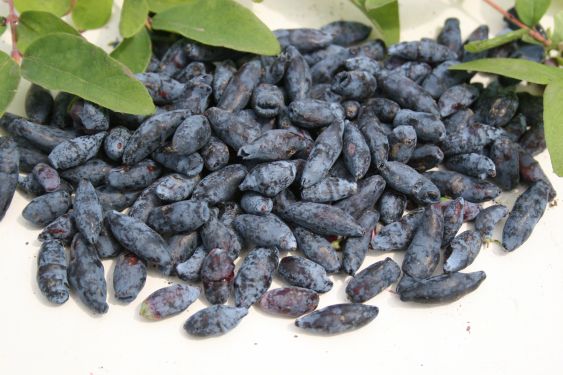
Instruction
In the spring, honeysuckle comes to life early: two weeks after the snow melts, leaves bloom on the bushes. Flowering may be early and not very if the spring is late with warmth. But, surprisingly, the berries still begin to ripen almost at the same time every year. The plant, being late with flowering, seems to spur itself on, trying to make the berries ready in the usual time. Honeysuckle is well pollinated, sets berries in the most unfavorable conditions. True, he does not like loneliness. The more varieties growing in close proximity to each other, the better the pollination. A variety of varieties not only benefit the plants, but also the owners. Varieties differ in taste, shape, size of berries, the ability to crumble after ripening or hold firmly on the bushes.
If you take into account some of the requirements of honeysuckle, it grows without problems. The soil is not very capricious, but does not like overdrying of the top layer. Therefore, mulching, frequent watering are indispensable conditions for the well-being of honeysuckle. With good watering, honeysuckle will grow well even in the open, but still it is better to plant it where it will be caressed by the morning sun and protected from the burning midday. Young plants especially suffer from excessive solar activity.
It is better to plant honeysuckle in a light-textured soil. If the soil on the site is heavy, it is advisable to add sand to it. A small mound is made in the planting hole, a seedling is placed on the “top”, the roots are spread “along the slopes” and fall asleep.
After harvesting, honeysuckle is fed with mineral fertilizers, since the main growth of its shoots occurs after fruiting. She gets organic matter by mulching.
Honeysuckle does not require special pruning. On bushes older than 15-18 years old, they begin to gradually cut out old branches so that the plants recover.
Honeysuckle grows moderately. Someone considers this a lack of culture, and someone considers it a virtue, since even adult bushes do not take up much space.
Related videos
Cough is one of the most common symptoms of colds and flu. To be more precise - the consequence of these diseases, which remains with us for a long time even after the disappearance of the temperature. Most treat it with "improvised" means or those advised by relatives or friends. Such an approach can have the most serious consequences.

Treatment- inhalation with soda solutions and taking expectorant drugs. At home, you can prepare decoctions from licorice root or coltsfoot leaves, sage.
Incorrect or untimely, unqualified treatment of colds and flu provokes the development of bronchitis. It is characterized by a deep, wheezing, hoarse cough. There is a lot of sputum with bronchitis, it acquires a greenish tint, it is difficult to cough.
Treatment- expectorant drugs with bronchodilator properties. In no case should you prescribe such drugs to yourself. This can only be done by the attending physician after a full course of diagnostics - a detailed examination, listening to breathing and, if necessary, an x-ray examination. If bronchitis was diagnosed at an early stage, then treatment without the use of antibiotics is possible.
A deep and painful cough, accompanied by painful sensations in the chest, is a symptom of pneumonia (pneumonia). Self-treatment is unacceptable!!!
Treatment- medical assistance, no options! Treatment is prescribed with the use of antibiotics, which are prescribed after the collection and study of biological materials. Pneumonia can be viral or bacterial. The type of drugs is selected in accordance with the type of pathogen.
Chronic cough - where?
If the cough does not go away even after drug treatment and lasts more than 14-20 days, then the cause is most likely not infectious.
allergic cough
A cough can be a manifestation of an allergic reaction of the body, for example, to dust or mold, plant pollen. Such a cough can transform into bronchial asthma, so it is very important to determine the source of the threat (allergen) and exclude the patient from contact with it. An allergen can only be identified through medical diagnosis.
heart cough
A persistent dry cough may indicate a heart problem, such as a defect or heart failure. For cardiac cough, attacks are characteristic at night, after physical exertion, with shortness of breath, blue skin. In addition, some drugs can stimulate the cough reflex, the action of which is aimed at lowering blood pressure.
It is important to understand that no matter what the cough is, you cannot treat it on your own! Only a medical specialist can determine the type of disease and prescribe adequate and effective treatment.
Related videos
Most cultivated plants are divided into species. Some groups can only be bred at home without adverse weather. Some can be bred strictly in the open air. There are plants that will grow well in unpretentious conditions - even in a greenhouse, even in the cold. Understanding what type the flower belongs to, it is reliable to organize proper care. The main components of care consist of ensuring air humidity, the regularity of introducing moisture into the soil and ensuring a favorable temperature. The amount of sun is one of the main components.
Selection of shrubs with different flowering periods.
To date, the choice of ornamental shrubs is diverse, you just have to decide for yourself: for what purpose and what function will it play in your garden? For a large garden range flowering shrubs much more, because you can create compositions using both small shrubs and impressive sizes, including trees. Well, if the garden is small!
The spring-flowering shrubs that feel good in the middle lane include spirea, almonds, Japanese quince, Canadian irga, keria, forsythia, wolfberry ... One of the first to bloom wolfberry, exuding an amazing aroma, but you need to be careful with this plant, since the plant is toxic (see below).
Spring Gold of ForsythiaIn early spring, forsythia will be the first to sound - a low shrub with bright yellow flowers, similar to bells, on completely bare branches, reflecting the sun's rays. Because of the abundant flowering, forsythia is popularly called "golden rain", "golden lilac", "golden bell".
Wolfberry - lilac cloud of daphne
Everything that one should be afraid of, beware of, most often, is accompanied by the epithet "wolf" among the people. A cunning merciless predator, the wolf has inspired fear in humans since ancient times. No exception to this rule and wolves. These beautiful deciduous shrubs are indeed deadly. The popular name Wolf's bast is given to the plant for its strong, hard-to-break bark. It is almost impossible to break a branch, it can only be cut.
But nevertheless, the wolves are decorative and they are grown in our gardens. As soon as the snow melts, when there is not a single green blade of grass anywhere, the daphne branches are already densely studded with fragrant bright lilac flowers. They can "sit" on the trunk in bunches of two to five flowers, or maybe one flower at a time. From afar, this shrub can be mistaken for a lilac bush. During flowering, and it lasts 15-20 days, the garden is filled with a very pleasant aroma.
The height of a compact bush rarely exceeds 1-1.2 m. Daphne blooms on the shoots of last year, before the leaves bloom. The leaves are oblong-shaped - appear later, up to 10 cm long, dark green above, lighter below. At the ends of the shoots, they are located densely, almost in bunches. At the end of summer, the bush is covered with shiny bright red or bright orange berries, which "sit" tightly and for a long time on the branches.
It is necessary to watch vigilantly so that children do not eat them, and explain to them that these beautiful berries are poisonous and even birds do not peck at them. However, they say that thrushes eat them with pleasure. But in my opinion, if there are children in the house, then it is better to refuse to plant bushes with poisonous berries.
It is frost-resistant, shade-tolerant, practically does not require care, used to live in the forests on its own under the canopy of trees. It is only necessary to protect it from garden aggressors - gout and wheatgrass. It is unpretentious to soils, but it grows better in damp, peat-filled, well-fertilized areas with humus. Does not tolerate drought well. It grows slowly, propagates by seeds (should be sown immediately after harvest), often gives self-sowing. It is desirable to transplant at a young age, in autumn, with a clod of earth. Adult plants do not like transplants. When buying, it is better to choose copies in containers. Strong pruning is contraindicated for bushes. All damaged branches are cut immediately after flowering.
To date, several decorative forms of wolfberry have been bred: white - with white fragrant flowers, terry - with white double flowers. There are other types, but they are more demanding on conditions and care. Cultural forms are proliferating green cuttings. Twigs cut from a bush in winter and placed in water are soon covered with flowers, filling the room with a delicate aroma.
garden plantsIf the aesthetic design of your garden is very important to you, then various ornamental shrubs will perfectly cope with this role. Any garden will only benefit from decorating with evergreen or deciduous shrubs. Ornamental shrubs with their peculiar coloring or flowering can help you create a hedge, divide the garden into different zones, decorate the entrance to your garden or decorate various elements.
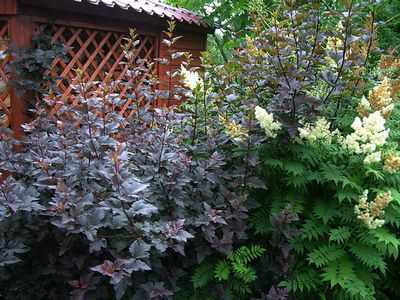
Ornamental shrubs perform not only a decorative function, they also protect garden alleys from wind and dust, help you not to decorate the garden, but also distract you from the usual bustle with their charming appearance and create a good mood.
Some varieties of ornamental shrubs have a long flowering period, while others have an unusual leaf shape or bright color. It is not difficult to care for them - they are not susceptible to diseases, they are very rarely affected by pests.
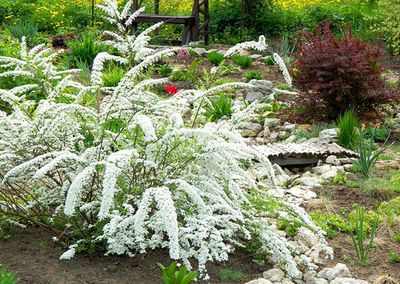
Now let's talk about those shrubs that are widespread in central Russia.
If your garden has green lawns, luxurious hydrangea bushes will be a great addition to them. Among gardeners, a rose bush is always popular - park roses are especially beautiful, they are frost-resistant, undemanding, they only bloom once in the whole season.

Some gardeners like to decorate their backyards with shrubs, which during flowering are able to fill the garden with a pleasant aroma - mock oranges, forsythia, wolfberry. Lush inflorescences of lilac and viburnum look very decorative. In our gardens, you can increasingly see bushes of rhododendrons or tree-like peonies. Summer is the time for the flowering of cinquefoil and spirea, kolquitsia and buddley. Closer to autumn, heather flowers begin to bloom - medium-sized, but collected in such lush inflorescences, shimmering with mother-of-pearl, which simply cannot but arouse admiration.
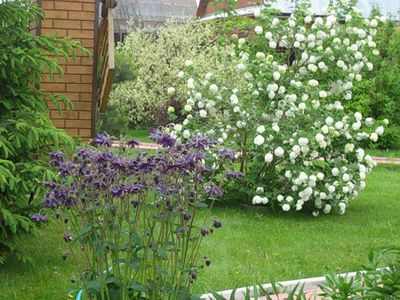
Ornamental shrubs are convenient because they decorate the garden from early spring to late autumn. A striking example are different varieties of barberry: their leaves can be bright yellow, and purple, bright green and purple, and even spotted. Aralia bushes look original - this bush is prickly, it looks like a tropical palm tree. The fieldfare also looks amazing, its young foliage has an unusual pink tint, but gradually acquire a rich green color. In autumn, they turn yellow and acquire a golden hue.
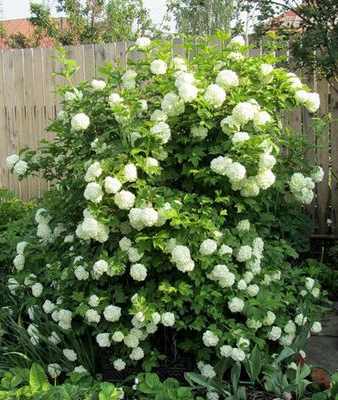
If your site is spoiled by a dark, plain wall or a high, unattractive fence, we recommend that you decorate these structures with decorative deciduous white derain bushes. No one will be indifferent to its chic carved dark green leaves, bordered by a cream contour. Young shoots of derain have a reddish tint, which makes it appearance much more colorful.
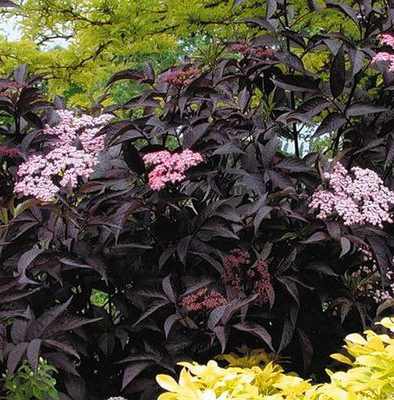
On heavy soils, some types of cinquefoil, barberry, spirea, forsythia feel great. Near the reservoirs, hydrangea will grow violently and bloom. And even calcareous soils are suitable for growing euonymus, elderberry, buddleia and cotoneaster.

When choosing ornamental shrubs to decorate your garden, you first need to combine them so that the plantings do not look clumsy. Therefore, it is best to create group plantings of ornamental shrubs of the same variety, rather than mixed plantings. You can also combine in a group planting different forms of ornamental shrubs belonging to the same genus - for example, plant barberry bushes with red and green leaves next to them. Hawthorn looks good - its varieties are distinguished by the coloring of fruits and inflorescences.
Japanese euonymus
Only through repeated pruning, carried out annually in spring and autumn, can dense and lush specimens be obtained. In order to form a standard tree, it is necessary to let the central shoot grow up to at least 40-50 cm, while plucking all the side buds. And upon reaching the desired height, begin to form a dense branched crown.
The Japanese euonymus does not grow very quickly, but constantly. Soil composition: 1 part of sod land, 1 part of humus and 0.5 parts of peat.
According to some data and our own observations, the Japanese euonymus can also tolerate frost down to -15C! So you can safely take out the euonymus to the garden right in May, and pick it up in October. Install it in a well-lit area, but it is better to protect it from midday rays. Do not forget to feed him three or four times a season. The plant is easily propagated by stem cuttings in spring and summer.
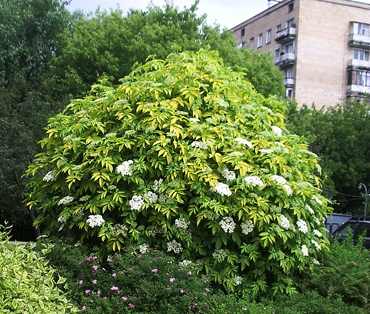
Black decorative elderberry
Ornamental shrubs for summer cottages and gardens - photo
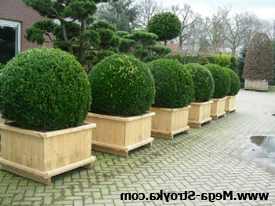 To give the summer cottage a natural look, along with tall, powerful trees, decorative shrubs are also planted for summer cottages. creating logically complete groups from them. By combining different types of shrubs, you can implement a variety of design solutions in the landscape. suburban area. Consider commonly used varieties of ornamental deciduous shrubs. Knowing their features, it will be convenient to first come up with a landscape design for a summer cottage and create a virtual design development, and then turn everything into reality.
To give the summer cottage a natural look, along with tall, powerful trees, decorative shrubs are also planted for summer cottages. creating logically complete groups from them. By combining different types of shrubs, you can implement a variety of design solutions in the landscape. suburban area. Consider commonly used varieties of ornamental deciduous shrubs. Knowing their features, it will be convenient to first come up with a landscape design for a summer cottage and create a virtual design development, and then turn everything into reality.
Many shrubs of different attractiveness can be seen in the park area of the Lakhta Center. which is being built in St. Petersburg. Lakhta Center is amazing project, containing various objects that will be available for each .
Holly is a shrub with dense, evergreen foliage and very beautiful red fruits. Grows on any soil except sandy, can withstand frost, but not stronger than -20°C. You can see this ornamental garden shrub in the picture below.
The fast-growing and unpretentious spirea is great for creating green hedges and various fences. When flowering, it is abundantly covered with inflorescences in the form of corymbs, painted depending on the variety in red, white or pink. It is noteworthy that in autumn the foliage of spirea acquires various, unusual shades. Spirea is resistant to frost, but loves the sun.

In early spring, when all the trees have not yet fully woken up after winter, forsythia blooms, delighting eyes yearning for joyful greenery with its bright yellow flowers. However, capricious forsythia prefers fertile soil and dies with a lack of moisture.

High (up to three meters) tamarisk grows mainly in the southern regions. The soil suitable for it is sandy and sandy loam. It is very beautiful during the flowering period, which falls in May-June.
Ornamental shrubs - photo:
For trimmed green hedges of various bizarre shapes, evergreen boxwood is suitable, which loves warmth and calmly tolerates shady places. For boxwood, arid or, conversely, too wet soils are unfavorable. The shrub is famous for its special aroma and fast growth. Varieties of dwarf and yellow-leaved boxwood are especially valued. Now you know what shrubs you can decorate your site with, but do not forget that there are other ornamental plants for the garden. which should also be used.
You can often hear about cases of mushroom poisoning, but do not forget that other gifts of nature can cause us serious problems. Our article will introduce you to the types of poisonous berries and teach you how to provide first aid in case of poisoning with them.
Poison Berries: Precautions
Walking through the forest, you just want to put seductively bright, beautiful and very appetizing-looking berries into your mouth, here and there attached to the branches of shrubs and trees. Is it worth it to meet this desire? Of course not, because any of them can be poisonous to our body.
Signs of berry poisoning
Various types of poisonous berries have a strictly defined effect on the human body, but we will try to highlight main symptoms indicating poisoning. So the things to worry about are:
- convulsions
- Rapid pulse
- Labored breathing
First aid for berry poisoning
The very first aid is to stimulate vomiting - this procedure will free the stomach from poisonous contents. To do this, the victim needs to be given 2-4 glasses of water (you can add Activated carbon - 2 tbsp. per 500 ml, salt - 1 tsp. 500 ml or potassium permanganate). The procedure will have to be carried out several times.
In the presence of drugs, it is recommended to give the patient activated carbon, tannin, as well as any laxative and heart remedy. In the presence of seizures will have to use chloral hydrate. If there is no first aid kit, you can give the patient black crackers, starch solution or milk. It does not hurt to also do an enema (if possible). The victim must be wrapped warmly and take to the doctor.
Honeysuckle forest
Honeysuckle forest - shrub, often found in the Urals and Western Siberia. Dark red berries This plant, unlike garden honeysuckle, is poisonous. The ripening time of the forest variety is July-August.


Wolf's bast
Wolf bark - shrub or small tree. The plant is common in moist forests. European part of Russia, as well as in Western Siberia. Oblong red-orange berries wolf's bast dot the bush in autumn. Even touching them can lead to poisoning.

Belladonna or belladonna
Belladonna is a member of the nightshade family. Beauty gives a harvest black with a purple tint of sweet and sour berries of an oblate-spherical shape already at the beginning of autumn. Most often, this poisonous berry can be found in middle lane of Russia.
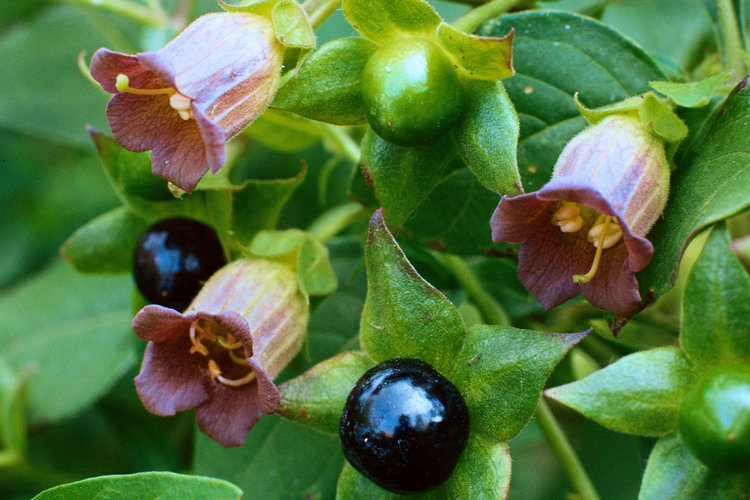
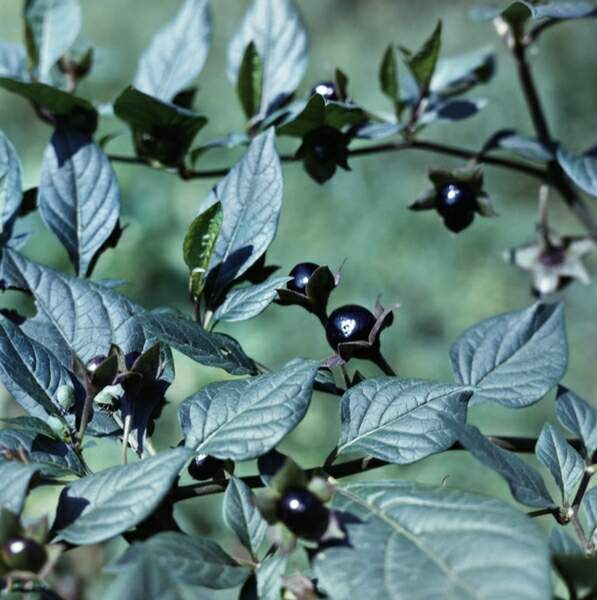
raven eye
it perennial has a low stem, on which there are 4-5 leaves of a rather large size and only one fruit ripens. The raven eye is common throughout Russia. This blue-black berry a bit like blueberries, but it is very poisonous (it affects the heart muscle, paralyzing its work).

Snowberry white
round berries white color ripen by the end of summer, and then hibernate on the plant until the onset of heat. Despite the seductive appearance, the berries are absolutely inedible. In our country, the snowberry is used as ornamental plant.
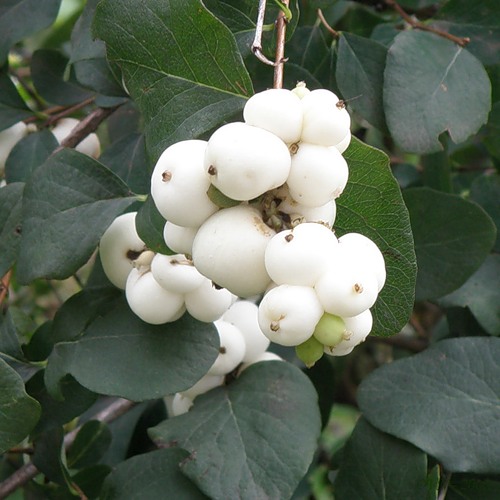
warty euonymus
Warty euonymus is deciduous shrub or a small tree, often found in European part of Russia. Euonymus fruits are very original - bright orange berries decorated with a black dot, and they ripen on a long "thread" (herbaceous stalk).

Nightshade bittersweet
Nightshade bittersweet - semi-shrub with woody base and long curly stem. Red berries with a bittersweet taste, ripen in June. The plant continues to bear fruit until October. Nightshade can be found in central Russia, as well as in the Far East and Siberia.
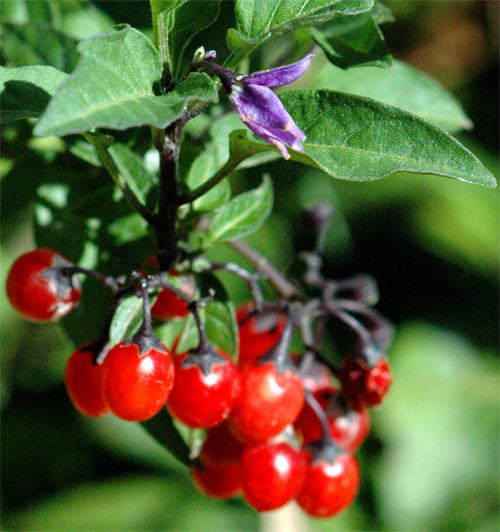
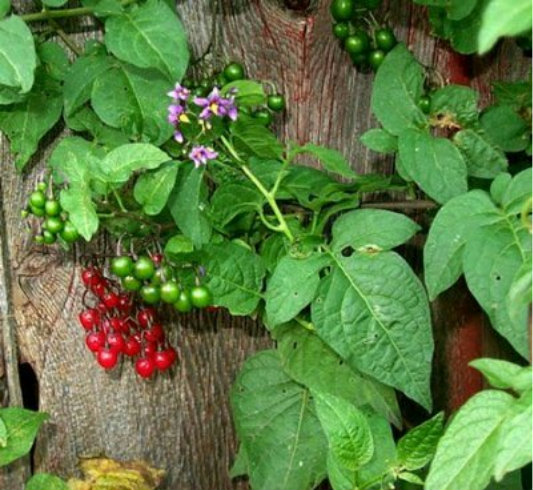
Marsh calla
Marsh calla - creeping hydrophyte with large heart-shaped leaves. Its fruits ( bunches of juicy red berries) ripen already at the end of June. The plant is widely distributed throughout Russia ( in wetlands).

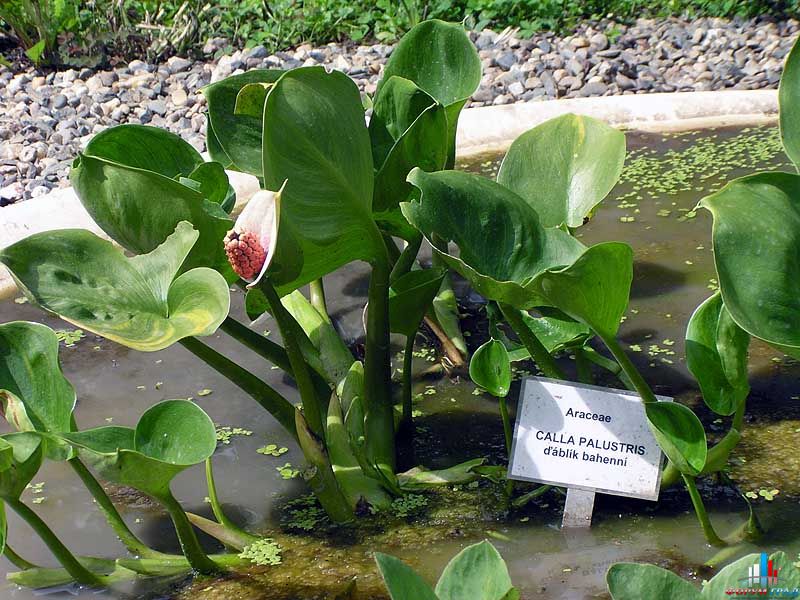
Elder herb (stinky)
smelly - herbaceous perennial plant belonging to the honeysuckle family. fruits ( small black drupes with red juice) appear in August-September. This plant is most commonly found in the southern regions of Russia in the mountains and foothills.

Privet or wolf berries
heat-loving deciduous shrub olive families. You can meet this plant in the southwestern part of Russia. Black and very poisonous berries ripen in September and remain on the branches for a long time. It's worth knowing that not only the fruits are poisonous, but also the leaves.


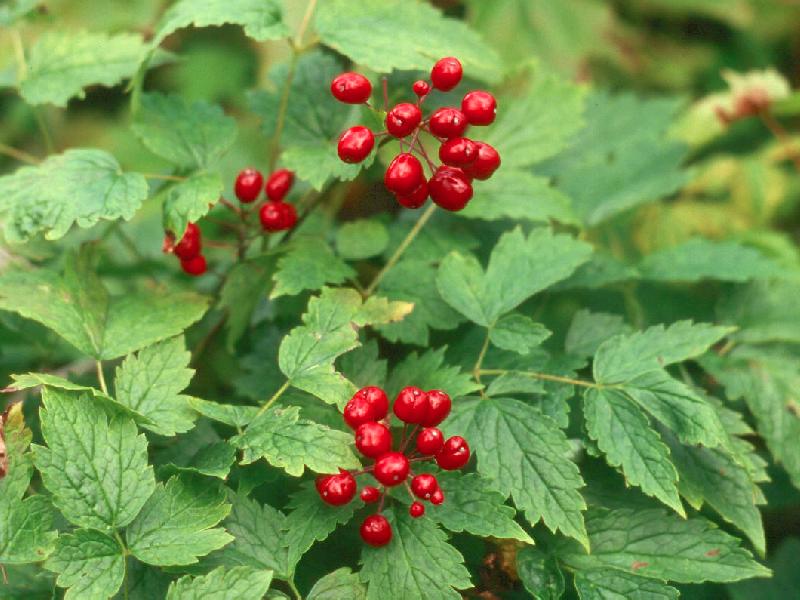
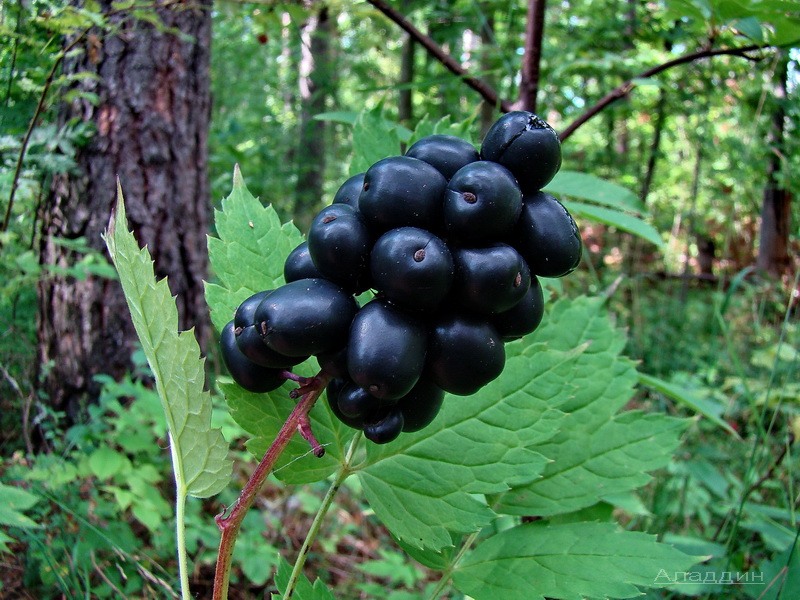
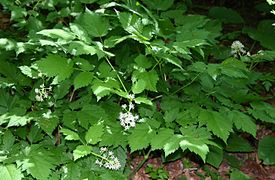
Aronnik spotted
Aronnik is a perennial herb with a thickened tuberous rhizome and basal leaves resembling a spearhead. In August, the leaves die off, and a stalk with numerous red berries remains above the ground. In September, the fruits fall off, and in the spring of the next year, self-sowing appears.

Aronnik spotted
Poisonous properties are possessed by fruits - berries of common ivy, double-leaved mink, May lily of the valley.
poisonous berries can not only poison, but also lead to death. That is why it is extremely important not to eat unfamiliar fruits, no matter how tempting they look.
©When copying site materials, keep an active link to the source.



